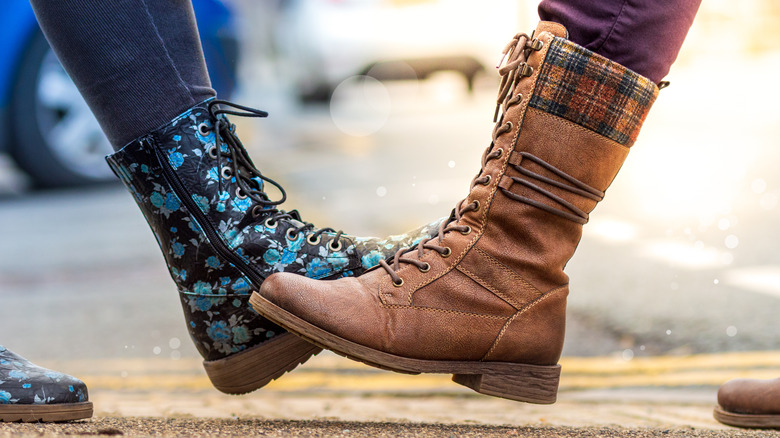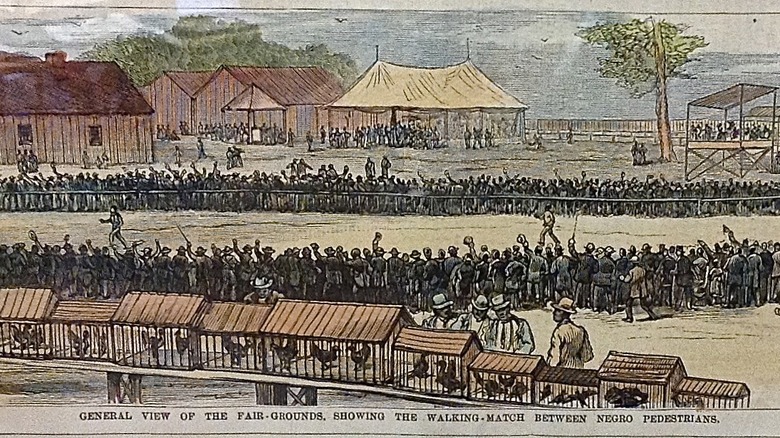Competitive Walking Was Once The Biggest Sport In The World
We may receive a commission on purchases made from links.
Walking: That thing that nobody does enough of in the sedentary throes of modernity's chair-bound lifestyles. There are about a thousand-and-one articles online about the lethality of sitting too much. On the other hand, exercise can apparently also kill you, as the Scotsman says. So what is a modern human with a body evolved for languorous, multi-hour foraging walks in nature — mixed with the occasional bursts of sprinting to flee or filet tusked boars — supposed to do? Author of "The Comfort Crisis," Michael Easter, has a solution: walk, you fools! Fly, flee, or "ruck," as he says in Elemental (walk while carrying stuff). Note: living in a city makes this all way, way easier.
Well, guess what? According to NPR, if you lived in late-17th-century or early-18th-century England, or late 1800s in the U.S., you could have walked while getting paid — and we don't mean yammering into the air on a Bluetooth-connected meeting while jogging in place at a crosswalk. People would have wagered on you, and cheered you on at intersections, and not made fun of you for doing that ridiculous power-walking gait that sometimes folks nowadays do while wearing elbow pads. In fact, you truly would have been, in the original sense of the word, a pedestrian. Basically, it's like being a marathoner without all the knee damage. That's right, competitive walking, or "pedestrianism," was a thing. And you, too, could have done it.
It's like NASCAR without cars
Ok, let's backpedal a bit. Not anyone could have, we'll say ... "pedested" (alternative verbs welcomed). As NPR says, participants in competitive pedestrian matches would have given our forager forbears a walk for their money. "Pedestrians," as they were called, walked up to 600 miles over the course of a match — typically held from Friday to the following Saturday — resting only about three hours a day. Matches took place in giant stadiums like the first Madison Square Garden. Participants stopped for naps in cots like NASCAR cars. There were brass bands, concessions like pickled eggs, celebrity appearances, and basically anything else you might imagine occurring at a modern sports match.
And before you go thinking, "How bored were these people, exactly?" have another look at the peak dates of pedestrian matches, such as post-Civil War 1870s in the United States. Industrialization was ramping up, people were moving to cities, and urban populations were booming. Before the advent of malls or plazas full of Chipotle and Zara, entertainment options were a bit more limited. And so, in a clever twist, people made a sport of one of the most basic of bodily processes: bipedal locomotion.
Playing Pasts recounts the craze as it hit England earlier in the 1800s. Working-class folks and "self-described gentlemen amateurs" rose to prominence. In 1809, Captain Barclay walked for 1,000 hours straight, and earned 1,000 gold guineas (£1,237,000, or $1,756,000). By the 1870s in England, though, and 1880s in the U.S., interest sadly fizzled out.

